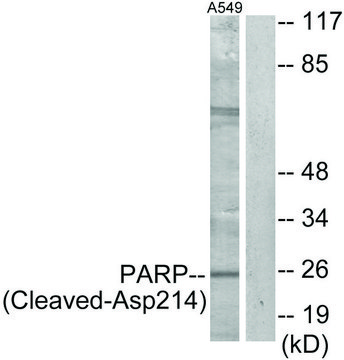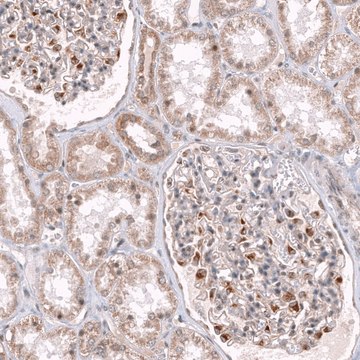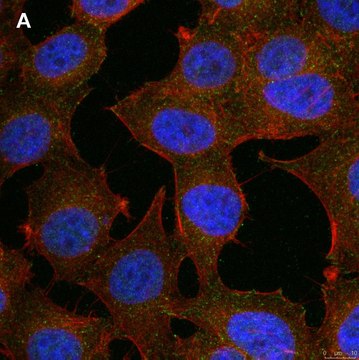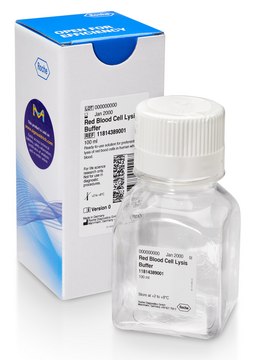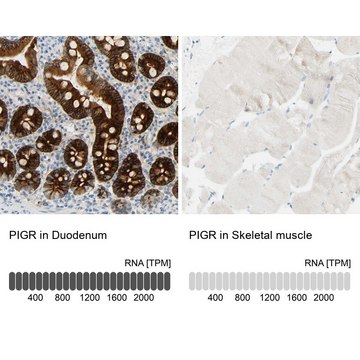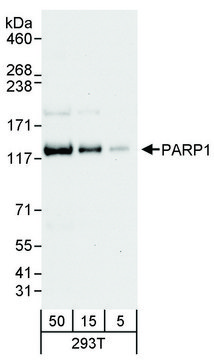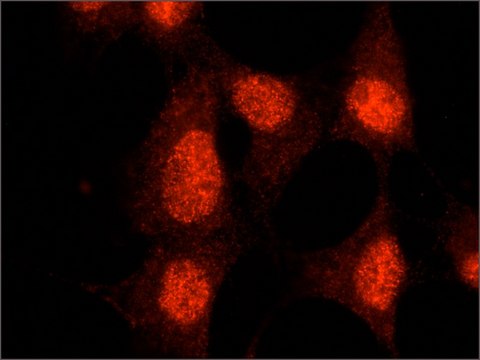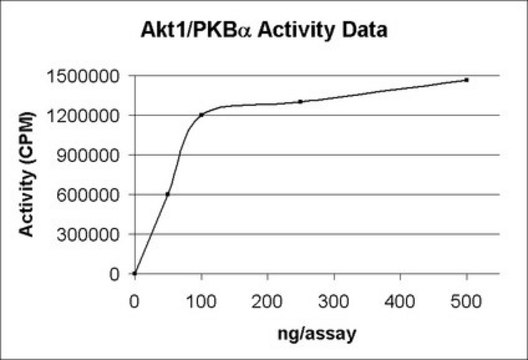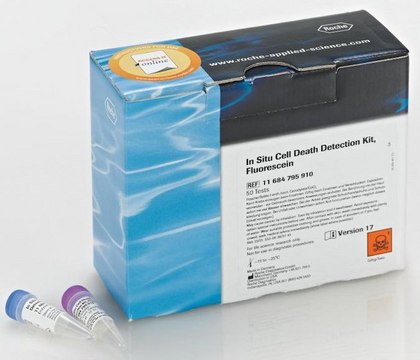一般描述
We are committed to bringing you greener alternative products, which adhere to one or more of The 12 Principles of Green Chemistry.This antibody is Preservative-free, produced without the harm or sacrifice of animals and exceptionally stable to allow for ambient shipping and storage if needed and thus aligns with "Waste Prevention", "Designing Safer Chemicals" and "Design for Energy Efficiency".
Click here for more information.
ZooMAb antibodies represent an entirely new generation of recombinant monoclonal antibodies.
Each ZooMAb antibody is manufactured using our proprietary recombinant expression system, purified to homogeneity, and precisely dispensed to produce robust and highly reproducible lot-to-lot consistency. Only top-performing clones are released for use by researchers. Each antibody is validated for high specificity and affinity across multiple applications, including its most commonly used application. ZooMAb antibodies are reliably available and ready to ship when you need them.
Learn more about ZooMAb here.特异性
Clone 12N17 is a ZooMAb rabbit recombinant monoclonal antibody that specifically detects poly[ADP-ribose)polymerase 1 (PARP-1). It targets an epitope within 10 amino acids from the N-terminal region.
免疫原
KLH-conjugated linear peptide corresponding to 10 amino acids from the N-terminal region of human Poly [ADP-ribose] polymerase 1 (PARP-1).
应用
Anti-PARP-1, clone 12N17, ZooMAb, Cat. No. ZRB1545, is a recombinant Rabbit monoclonal antibody that detects PARP-1 and is tested for use in Flow Cytometry, Immunocytochemistry, Immunohistochemistry (Paraffin), and Western Blotting.
Western Blotting Analysis: A 1:1,000 dilution from a representative lot detected PARP-1 in Jurkat treated with etoposide.
Immunocytochemistry Analysis: A 1:100 dilution from a representative lot detected PARP-1 in HeLa cells treated with Cisplatin.
Immunohistochemistry (Paraffin) Analysis: A 1:10-100 dilution from a representative lot detected PARP-1 in human kidney and human tonsil tissue sections.
Flow Cytometry Analysis: 0.1 μg from a representative lot detected PARP-1 in one million HeLa cells treated with Cisplatin.
Note: Actual optimal working dilutions must be determined by end user as specimens, and experimental conditions may vary with the end user
目标描述
Poly [ADP-ribose] polymerase 1 (UniProt: P09874; also known as EC:2.4.2.30, PARP-1, ADP-ribosyltransferase diphtheria toxin-like 1, ARTD1, DNA ADP-ribosyltransferase, PARP1, NAD(+) ADP-ribosyltransferase 1, ADPRT 1, Poly[ADP-ribose] synthase 1, Protein poly-ADP-ribosyltransferase PARP1) is encoded by the PARP1 (also known as ADPRT, PPOL) gene (Gene ID: 142) in human. PARP1 is zinc-dependent DNA binding protein that recognizes DNA strand breaks and plays a role in DNA repair. It is involved in the base excision repair (BER) pathway by catalyzing the poly(ADP-ribosyl)ation of a limited number of acceptor proteins involved in chromatin architecture and in DNA metabolism. This modification follows DNA damages and appears as an obligatory step in a detection/signaling pathway leading to the reparation of DNA strand breaks. In addition to BER pathway, it is also involved in double-strand breaks (DSBs) and accumulates at DNA damage sites and promotes homologous recombination repair by mediating poly-ADP-ribosylation. PARP1 also mediates the poly(ADP-ribosyl)ation of a number of proteins and mainly mediates glutamate and aspartate ADP-ribosylation of target proteins. The ADP-D-ribosyl group of NAD+ is transferred to the acceptor carboxyl group of glutamate and aspartate residues and further ADP-ribosyl groups are transferred to the 2′-position of the terminal adenosine moiety, building up a polymer with an average chain length of 20-30 units. The DNA-binding region of PARP1 is localized to amino acids 2-373. It also contains two zinc-finger regions (aa 9-93 and 113-203). PARP is cleaved between amino acids Asp214 and Gly215 to yield two fragments: a 29 kDa (N-terminal) and a 85 kDa (C-terminal DNA-binding domain). The carboxyl-terminally located 54-kDa domain of PARP represents the NAD1-binding domain with the characteristic PARP signature, which includes a highly conserved sequence comprising the catalytically crucial amino acid residue Glu-988. Its catalytic activity is stimulated by noncovalent contact of the DNA-binding domain with DNA strand breaks and results in the post-translational modification of various acceptor proteins. In between the DNA binding domain and the NAD1-binding domain, it also contains a 22-kDa auto-modification domain. This ZooMAb recombinant monoclonal antibody, generated by our propriety technology, offers significantly enhanced specificity, affinity, reproducibility, and stability over conventional monoclonals. (Ref.: Alvarez-Gonzalez, R., et al. (1999). J. Biol. Chem. 274(45); 32122-32126).
外形
Purified recombinant rabbit monoclonal antibody IgG, lyophilized in PBS, 5% Trehalose, normal appearance a coarse or translucent resin. Contains no biocide or preservatives, such as azide, or any animal by-products. Larger pack sizes provided as multiples of 25 μL.
重悬
30 μg/mL after reconstitution at 25 μL per vial. Please refer to guidance on suggested starting dilutions and/or titers per application and sample type.
储存及稳定性
Recommend storage of lyophilized product at 2-8°C; Before reconstitution, micro-centrifuge vials briefly to spin down material to bottom of the vial; Reconstitute each vial by adding 25 μL of filtered lab grade water or PBS; Reconstituted antibodies can be stored at 2-8°C, or -20°C for long term storage. Avoid repeated freeze-thaws.
法律信息
ZooMAb is a registered trademark of Merck KGaA, Darmstadt, Germany
免责声明
Unless otherwise stated in our catalog or other company documentation accompanying the product(s), our products are intended for research use only and are not to be used for any other purpose, which includes but is not limited to, unauthorized commercial uses, in vitro diagnostic uses, ex vivo or in vivo therapeutic uses or any type of consumption or application to humans or animals.


